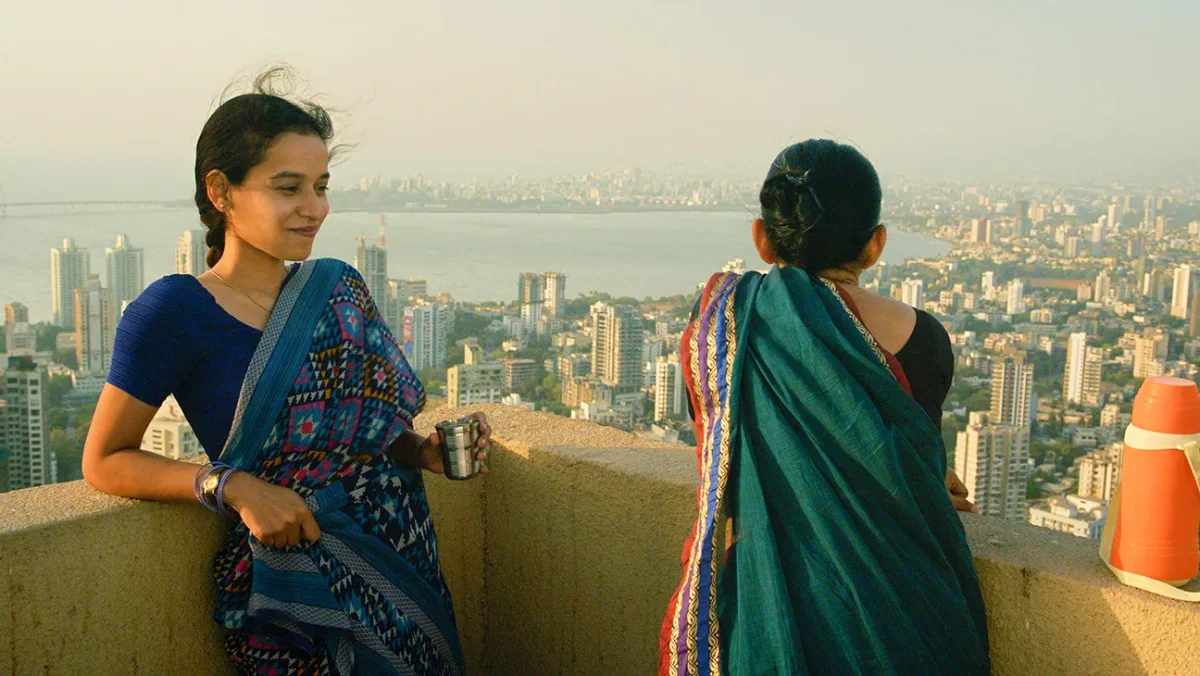With pauses that stretch into silence, corridors heavy with unspoken words, and a narrative that refuses to rush, Rohena Gera’s “Sir” (2018) emerges as a masterpiece of emotionally intelligent filmmaking, crafted with utmost dignity and care. The film is, at its heart, Ratna’s story. Perhaps Rohena’s exploration of love, caste, class, and gender began much earlier with her 2013 documentary “What’s Love Got to Do with It?,” a work that dissected modern relationships through the lens of urban privilege.
In that film, Gera had already begun interrogating how social hierarchies shape our most intimate spaces. How love, choice, and autonomy are unequally distributed depending on who we are allowed to be. What felt like a social observation there evolves into something far more embodied in “Sir,” which is a love story filtered through unequal access to dignity, space, and voice.
“Sir” sits at the intersection of love and class struggle. In India, love cannot be isolated from the social scaffolding that defines who is worthy of desire. Ratna’s story exposes how intimacy itself becomes a site of resistance when it transgresses caste and class boundaries. Love, here, is not merely an emotion but a radical act, a disruption of inherited hierarchies. What makes this film remarkable is that it rarely ever preaches; it simply presents life as it is. The ambiguous ending leaves you suspended, half empty, half full, challenging both the hopeless romantic and the pragmatist within. You decide.
The story follows Ratna, a working-class woman who leaves her village for Mumbai, the city of dreams, to support her family and community. She works as a live-in domestic help for Ashwin, a young upper-class man, and over time, a quiet connection develops between them. Yet the film refuses to simplify their relationship into romance or exploitation. Every glance, every pause, every long corridor becomes a measure of social distance, emotional restraint, and the delicate negotiation between power and desire.
Here, the film quietly critiques brahmanical patriarchy. Coined by historian Uma Chakravarty, the term refers to the regulation of women’s sexuality and mobility through caste hierarchies. Traditionally, lower-caste women have had more freedom to work outside the home, while upper-caste women’s mobility is tightly controlled, often framed as permissions granted by husbands or families. Ironically, Ratna is freer than Ashwin. She names this truth herself; he is bound by honour, reputation, and family duty, while she, despite her class constraints, moves with the quiet determination of someone who has nothing to lose but her dignity.

Read More: Is Love Enough? Sir [2020] Review: An Intelligent Romance that understands Atypical Confinements
The film hints subtly but unmistakably at Ratna’s caste location. Her speech carries traces of a rural Marathi dialect, and her place in the home is marked by invisible lines she cannot cross: the separate utensils, the spatial choreography of servitude, the way she hovers near thresholds but rarely sits down. There’s a scene where she expresses her dream of becoming a fashion designer, and Ashwin’s polite surprise betrays the limits of his imagination. What he cannot quite fathom is that a woman who irons his shirts might also design them. These details, quiet as they are, expose the social distance that caste inscribes in daily life.
Tillotama Shome’s Ratna conveys depth through quiet precision; her gestures, fleeting expressions, and silences often reveal more than words could. Vivek Gomber’s Ashwin inhabits a restrained vulnerability, a figure shaped by societal expectations yet capable of unexpected tenderness. Avinash Arun’s cinematography renders Mumbai less as a city and more as a network of shifting light, shadow, and latent tension. The film’s deliberate pacing reflects Ratna’s inner rhythms, while Thomas Simon’s understated score subtly underscores the contemplative mood.
Notably, the film avoids naming caste. No surnames, no explicit references, all we know is that Ratna comes from a small village and a working-class family. Yet the unspoken context is unavoidable in India. If you can afford a full-time domestic worker, she almost certainly comes from a marginalized community. This absence of explicit identification makes the film feel universal, while simultaneously underscoring the persistent inequalities that structure everyday life.
At its core, “Sir” is about human emotion, love, longing, and aspiration set against the rigid scaffolding of caste and class. Ashwin can reject his father’s expectations and move abroad with relative ease; Ratna cannot. Her choice to leave, to pursue dignity on her own terms, resonates profoundly. It is heartbreaking, empowering, and, ultimately, open-ended—a quiet act of resistance within a system that constantly circumscribes possibility.
To watch “Sir” through a Dalit feminist lens is to feel the ache of recognition. Ratna’s silence is not submissive. It carries the weight of generations who learned to protect their dignity in the face of erasure. Her longing does not ask for rescue; it demands equality.
When she turns away from Ashwin’s confession of love, she is not rejecting romance. She is rejecting a world that still expects her to be subservient, even in desire. As a Dalit woman watching Ratna, I do not see tragedy but power—the courage to claim selfhood over sentiment, dignity over dependence. The brilliance of “Sir” is that it never tells us what to think. It leaves us with silence, ambiguity, and a choice. Whose side are you on? Because, sir, the struggle is all too real.





![Jurassic World: Fallen Kingdom [2018]: Has Just Enough Bite](https://79468c92.delivery.rocketcdn.me/wp-content/uploads/2018/06/jurassic-world-2-2-768x321.jpg)